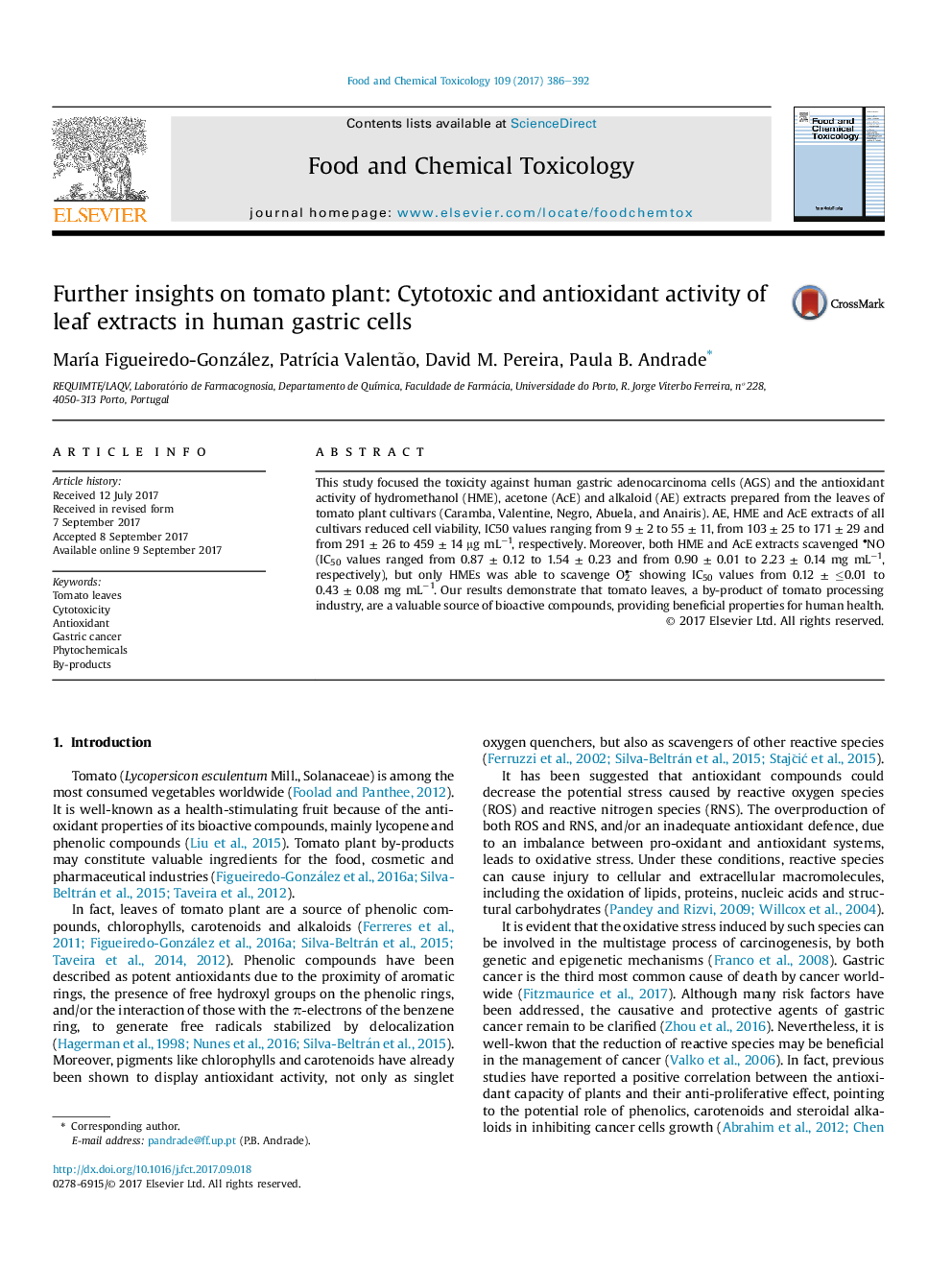| کد مقاله | کد نشریه | سال انتشار | مقاله انگلیسی | نسخه تمام متن |
|---|---|---|---|---|
| 5559981 | 1403305 | 2017 | 7 صفحه PDF | دانلود رایگان |
- Leaves of five selected tomato cultivars were studied.
- First report on their cytotoxicity and antiradical activity.
- Hydromethanol extracts scavenged nitric oxide and superoxide radical anion.
- Alkaloid extracts were the most cytotoxic to gastric cancer cells.
- Extracts from tomato leaf could be applied in nutraceuticals and pharmaceuticals.
This study focused the toxicity against human gastric adenocarcinoma cells (AGS) and the antioxidant activity of hydromethanol (HME), acetone (AcE) and alkaloid (AE) extracts prepared from the leaves of tomato plant cultivars (Caramba, Valentine, Negro, Abuela, and Anairis). AE, HME and AcE extracts of all cultivars reduced cell viability, IC50 values ranging from 9 ± 2 to 55 ± 11, from 103 ± 25 to 171 ± 29 and from 291 ± 26 to 459 ± 14 μg mLâ1, respectively. Moreover, both HME and AcE extracts scavenged
- NO (IC50 values ranged from 0.87 ± 0.12 to 1.54 ± 0.23 and from 0.90 ± 0.01 to 2.23 ± 0.14 mg mLâ1, respectively), but only HMEs was able to scavenge O2
- - showing IC50 values from 0.12 ± â¤0.01 to 0.43 ± 0.08 mg mLâ1. Our results demonstrate that tomato leaves, a by-product of tomato processing industry, are a valuable source of bioactive compounds, providing beneficial properties for human health.
Journal: Food and Chemical Toxicology - Volume 109, Part 1, November 2017, Pages 386-392
